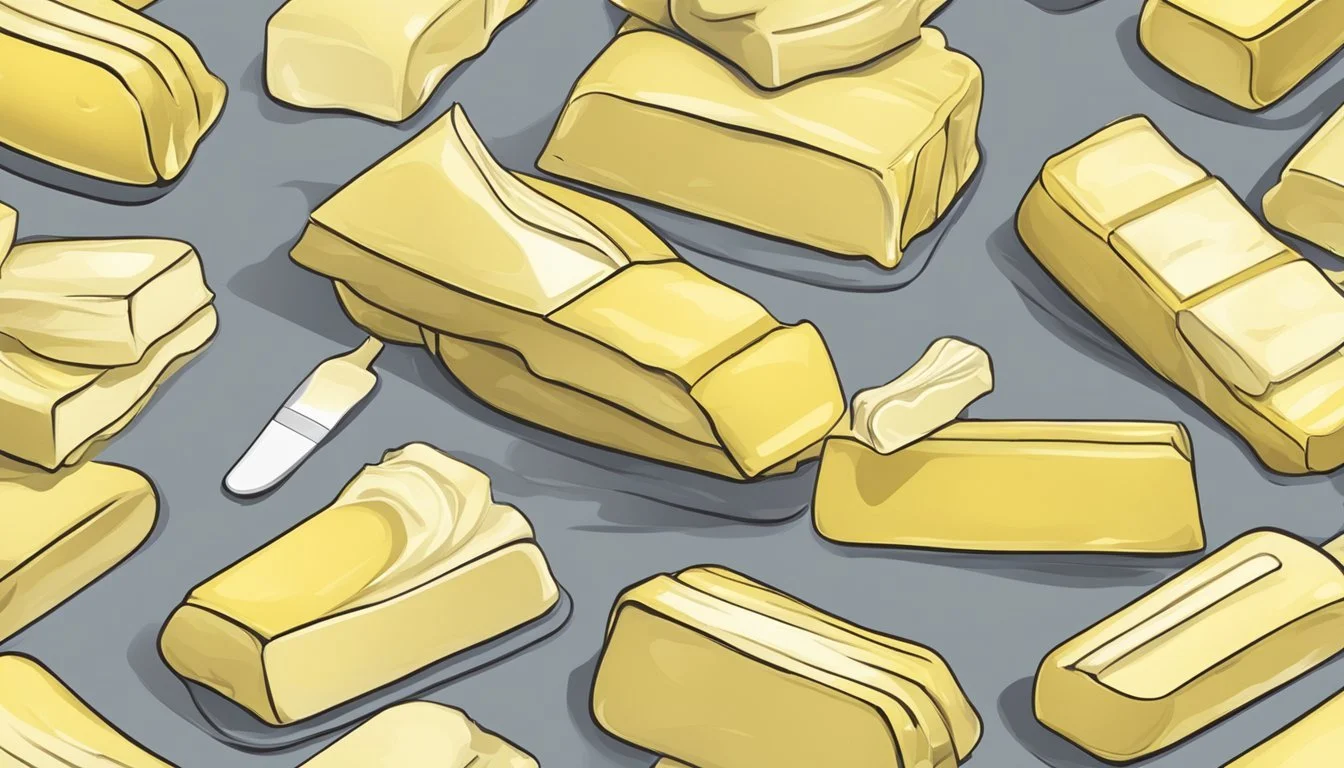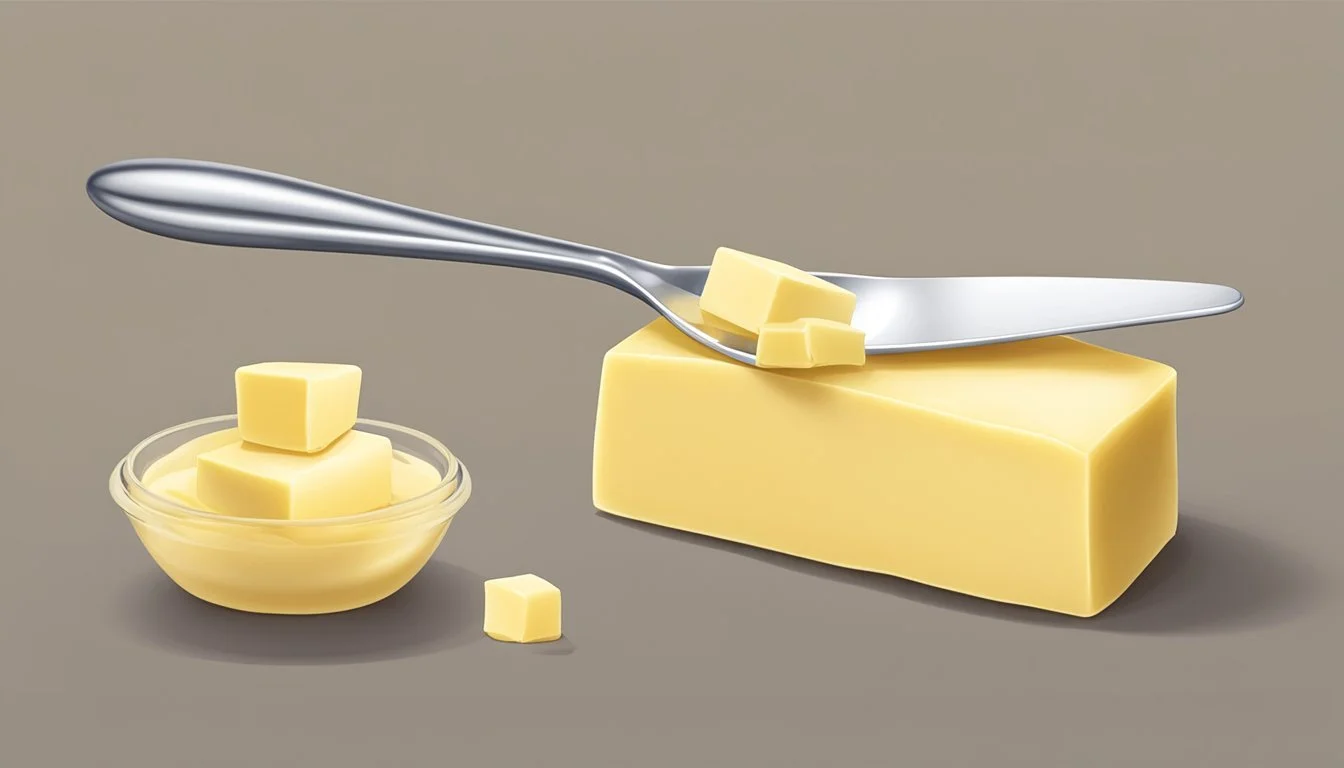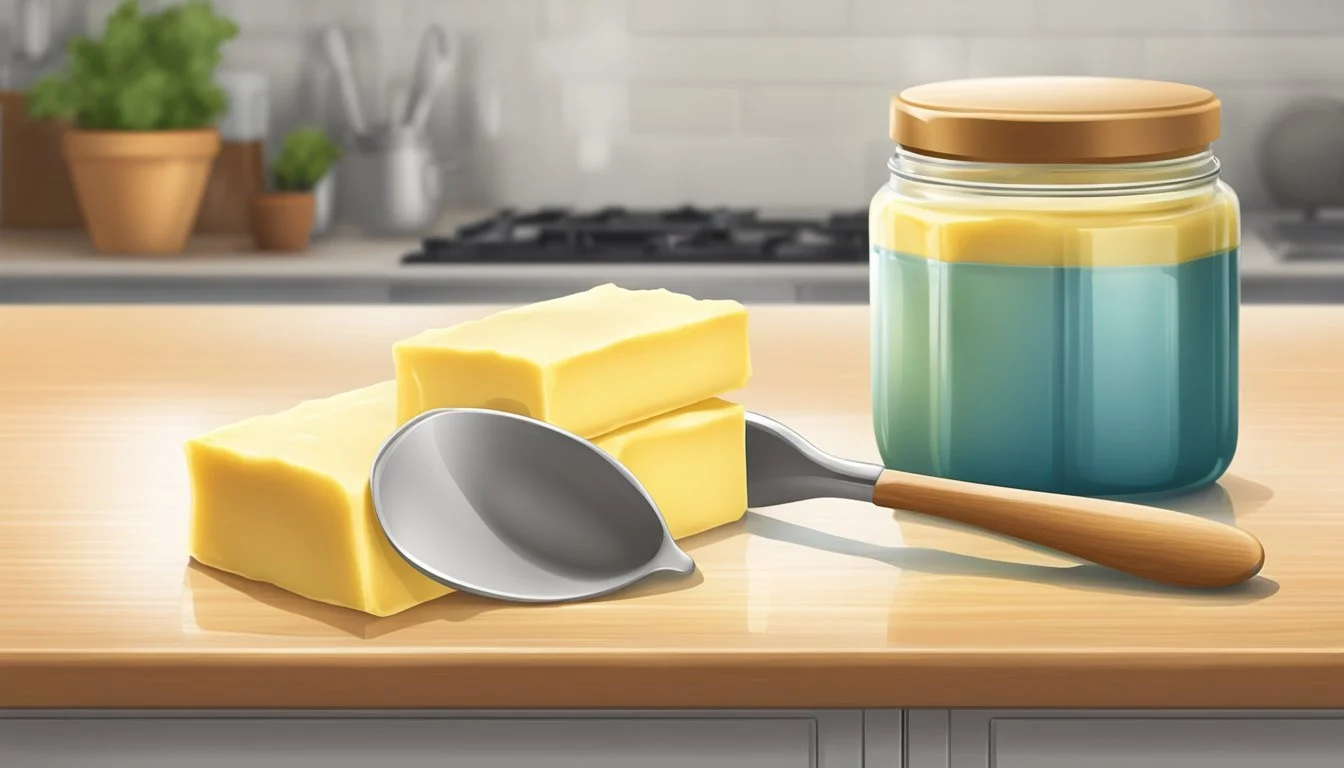How Many Tablespoons in a Stick of Butter
Quick Measurement Guide
In the culinary world, precise measurements are paramount for the success of a recipe. A common measurement encountered in American kitchens is the stick of butter, which often needs to be converted to tablespoons for clarity. One standard stick of butter is equivalent to 8 tablespoons. This is a crucial conversion to know, as many recipes call for butter in tablespoons, and understanding how many tablespoons are in a stick can make the process of measuring much smoother.
The ease of this conversion lies in the standardized packaging of butter in the United States. Butter is typically sold in one-pound boxes, with each box containing four sticks. Each stick, therefore, represents 1/4 pound of the total weight, which translates to 4 ounces, or 8 tablespoons. This direct relationship simplifies the conversion process, making it easier to accurately measure out the required amount of butter for various recipes.
Understanding this conversion also assists in scaling recipes up or down. The knowledge that a stick of butter converts to 8 tablespoons allows cooks to quickly make adjustments, whether they are halving, doubling, or altering a recipe to fit their needs. Therefore, the relationship between sticks of butter and tablespoons is not just a trivial fact but a foundational aspect of proficient cooking and baking.
Understanding Butter Measurements
When cooking or baking, it is crucial to precisely understand the relationship between different units of measurement for butter. Accurate conversions between tablespoons, sticks, ounces, and cups can determine the success of a recipe.
Standard Size of a Stick of Butter
A standard stick of butter in the United States is 4 ounces in weight. It is typically packaged in a rectangular shape and is also commonly referred to as a half cup (1/2 cup) in volume. Each stick of butter is equivalent to 8 tablespoons (tbsp).
Tablespoons to Sticks Conversion
Knowing how to convert tablespoons to sticks of butter is essential for measuring correct amounts. Here's a simple conversion table:
Tablespoons (tbsp) Fraction of a Stick Approximate Sticks 1 1/8 of a stick 0.125 sticks 2 1/4 of a stick 0.25 sticks 4 1/2 of a stick 0.5 sticks 8 1 full stick 1 stick 16 2 full sticks 2 sticks
Common Butter Measurement Equivalents
In recipes, butter amounts may be listed in a variety of units. Familiarize oneself with the common conversion equivalents.
1 stick of butter = 8 tablespoons = 1/2 cup = 4 ounces
1 tablespoon = 3 teaspoons (tsp)
1 cup of butter = 16 tablespoons = 2 sticks = 8 ounces = 1/2 pound
By understanding these equivalents, one can easily measure out the necessary amount of butter for any given recipe.
Measurement Techniques
Accurate butter measurement is crucial for baking success. Knowing how to measure butter aids in achieving the desired consistency and taste of baked goods. Proper technique and the right tools ensure precision.
Measuring Butter Accurately
One stick of butter equates to 8 tablespoons. To measure butter correctly, one should use a kitchen scale for weight measurement or the marked lines on the butter wrapper for volume measurement.
Weighing butter: Place butter on a kitchen scale for an accurate weight.
Using the wrapper: Most butter sticks come with measurement markings for each tablespoon.
Tips for Measuring Butter in Cups
Sometimes recipes call for butter in cup measurements. Here is a simple conversion:
1 stick of butter = 1/2 cup
1/2 stick of butter = 1/4 cup
1/4 stick of butter = 1/8 cup
Using a measuring cup, pack butter into the cup to ensure all air pockets are filled and level the top with a straight edge for an accurate measure.
Measuring Butter in High-Altitude Baking
High-altitude baking can affect the measurement of butter due to changes in air pressure and moisture. In such cases, accuracy becomes even more critical and can be achieved by using butter measurement equivalents referencing standardized tables or kitchen scales. Using a digital scale can help one adapt recipes to high-altitude conditions by providing precise weight, which is unaffected by volume changes at different altitudes.
Butter Conversion Factors
Understanding butter conversion factors is essential when cooking and baking to ensure precise measurements. The conversion accounts for various units of volume and weight, relevant to the common practice in the US of selling butter by weight, while recipes often call for volumetric measurements.
Volume versus Weight
Butter conversions between volume and weight can be challenging because one directly measures the space an item occupies, while the other measures its mass. A standard stick of butter in the US typically weighs 4 ounces, which is approximately 113 grams. Volumetrically, this corresponds to 1/2 cup or 8 tablespoons.
Measurement Units Variations
Different regions may use different units for butter measurements. In the US, cooks often use cups, sticks, tablespoons, and ounces. For instance, when they convert sticks of butter to other measurements, the relationship they rely on is:
1 stick = 1/2 cup = 8 tablespoons = 4 ounces = 113.4 grams
1/2 stick = 1/4 cup = 4 tablespoons = 2 ounces = 56.7 grams
Conversion Table Use
Using a conversion table simplifies the process of converting between volume and weight. It’s a practical tool for quickly finding the equivalent amount of butter in different measurements. The approximate conversions for butter are as follows:
Volume (Cups) Weight (Sticks) Weight (Grams) Weight (Ounces) Volume (Tablespoons) 1/4 cup 1/2 stick 56.7 g 2 oz 4 tbsp 1/2 cup 1 stick 113.4 g 4 oz 8 tbsp 3/4 cup 1 1/2 sticks 170.1 g 6 oz 12 tbsp 1 cup 2 sticks 226.8 g 8 oz 16 tbsp
This table demonstrates common conversions chefs and home cooks use within the US culinary context.
Baking with Butter
Butter plays an indispensable role in baking, contributing to the flavor, texture, and consistency of baked goods. It's important to use the correct type of butter and measurement for optimal results in recipes.
Role of Butter in Baking
Butter enhances the flavor of baked items, providing a rich taste that often cannot be replicated with other fats. Different types of butter, such as unsalted butter and salted butter, can be used to control the seasoning of the final product. Butter also introduces air into doughs and batters when creamed, contributing to the lightness and fluffiness of cakes and cookies. The water content in the butter creates steam during baking which aids in leavening.
Butter Texture and Consistency
The consistency of butter is vital in achieving the desired texture in baking. Softened butter is ideal for creaming together with sugar to create a light and airy foundation for many recipes. Refrigerated butter is best for creating flaky pie crusts and pastries, where it is cut into flour until pea-sized crumbs form. Each stick of butter typically measures 1/2 cup, which is equivalent to 8 tablespoons or about 113 grams. Maintaining the correct size and measurement of butter is crucial for the balance of ingredients in a recipe.
Melting and Clarified Butter
Melted butter, compared to softened butter, contributes to a denser texture in baked goods like brownies and sometimes cookies. Clarified butter, which is butter that has been melted and separated from its milk solids and water, has a higher smoke point, making it suitable for baking applications that require high heat. Clarified butter can also impart a more intense butter flavor due to the concentrated fat content. When melted or clarified butter is used in a recipe, it's imperative to precisely measure it — one stick of butter, when melted, still measures 1/2 cup.
Using butter correctly is essential for successful baking, as it influences the moisture, freshness, and overall sensory profile of the finished product. Butter substitutes in baking can be utilized, however, they may alter the flavor and texture, since they may have different moisture contents or fat percentages compared to traditional butter.
Butter Varieties and Substitutes
When exploring the wide array of butter varieties and their substitutes, it is key to understand the different compositions and uses that each type offers. From the classic stick of pure butterfat to plant-based alternatives, the choices cater to dietary preferences and cooking requirements.
Types of Butter
Salted Butter: This butter has added salt, enhancing flavor and extending shelf life. Typically, each stick contains about 1/4 teaspoon of salt.
Unsalted Butter: Also known as sweet butter, it is the purest form with 100% pure butterfat, offering a true, unaltered taste of butter.
Whipped Butter: Air is whipped into regular butter, making it lighter and more spreadable. It isn't ideal for baking due to its varied density.
Healthier Butter Alternatives
Margarine: Once a popular butter substitute, margarine is made from vegetable oils and contains less saturated fat but varies in trans fat content, so it’s essential to read labels.
Healthy Fats: Alternatives like olive oil or avocado butter offer monounsaturated fats, making them a heart-healthy choice compared to traditional butter.
Butter Substitutes: Various plant-based spreads mimic butter in flavor and texture, offering alternatives for those avoiding dairy or seeking lower calorie options.
Understanding these options allows individuals to make informed choices based on dietary restrictions, health goals, and culinary needs. Each substitute behaves differently when used as a replacement, so adjustments in recipes may be necessary.
Practical Tips
When cooking or baking, it’s essential to use precise measurements of butter for the desired outcome.
Converting Butter Measurements
A standard stick of butter in the U.S. equates to 8 tablespoons or 1/2 cup. To efficiently convert butter from sticks to tablespoons or cups, one can reference the following table:
Sticks of Butter Tablespoons Cups 1 8 1/2 1/2 4 1/4 1/4 2 1/8
For those needing to convert tablespoons to teaspoons, remember that 1 tablespoon equals 3 teaspoons (tsp). Therefore, one stick of butter is also equivalent to 24 teaspoons. Having basic conversion knowledge and measuring spoons on hand can facilitate a home cook's preparation process.
Storing and Handling Butter
When not using butter immediately, store it in the refrigerator to maintain its solid state and freshness. Prior to measuring, if a recipe calls for butter at room temperature, let the butter sit out until it softens, which typically takes about 30 minutes to an hour. This can make the process of dividing the butter into tablespoons or cups simpler.
If one needs to measure out a portion of a block of butter, the wrapper often has markings indicating tablespoons, which can be cut along for accurate measurement. For a quick conversion, remember that 1 pound of butter is equivalent to 2 cups or 4 sticks. Using the packaging markings or measuring spoons can help ensure that the conversion from a butter cup to stick ratio is precise, which is crucial for accurate recipe execution.







